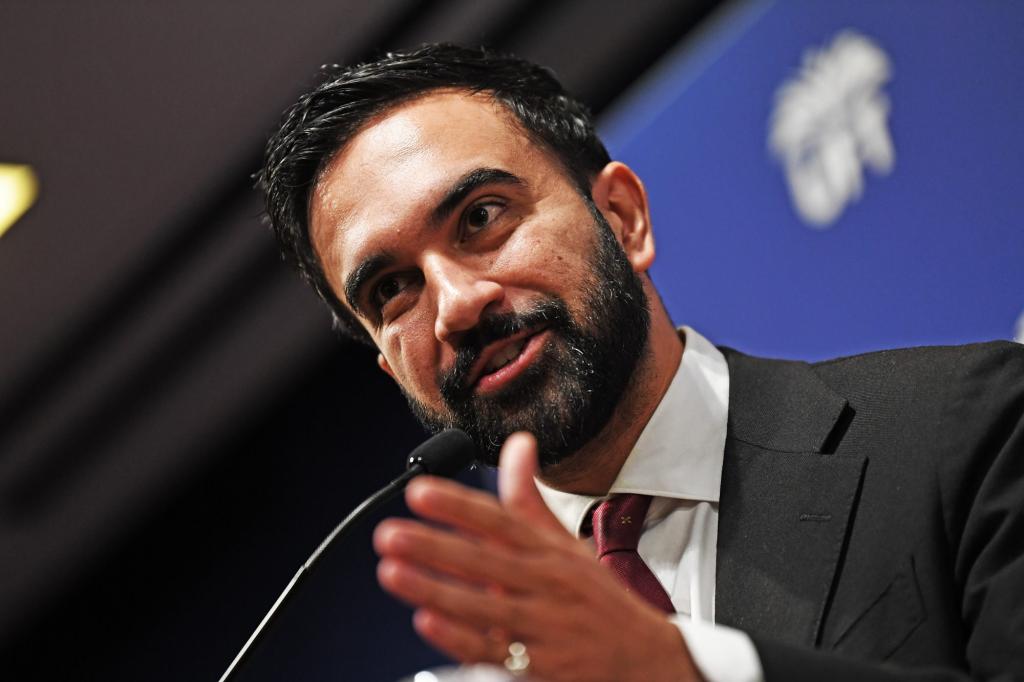New York City’s educational landscape faces another potential transformation as mayoral candidate Zohran Mamdani announces his intention to phase out gifted and talented programs in public schools. This proposal has reignited a longstanding debate about educational equity, excellence, and the best ways to serve the diverse needs of NYC’s student population.
The Current State of NYC’s Gifted and Talented Programs
New York City’s Gifted and Talented (G&T) programs have been a cornerstone of the public education system for decades, serving approximately 16,000 students across elementary and middle school levels. These programs are designed to provide accelerated learning opportunities for students who demonstrate exceptional academic ability through standardized testing and other assessments.
The programs have historically been concentrated in certain neighborhoods, with higher participation rates in affluent areas of Manhattan, Brooklyn, and Queens. This geographic distribution has contributed to ongoing discussions about accessibility and equity within the system.
How Students Currently Access G&T Programs
The current admission process involves multiple steps, including cognitive assessments and academic evaluations. Students typically take tests in kindergarten or second grade, with results determining placement in specialized programs. However, this system has faced criticism for potentially creating barriers for students from underrepresented communities.
Mamdani’s Educational Vision
Zohran Mamdani, a New York State Assembly member representing Queens, has positioned education reform as a central pillar of his mayoral campaign. His proposal to eliminate G&T programs reflects a broader philosophy aimed at addressing educational inequities that he argues have persisted in the nation’s largest school district.
The Rationale Behind the Proposal
Mamdani’s approach stems from research suggesting that gifted programs can inadvertently perpetuate segregation and limit opportunities for students who might benefit from enhanced resources but don’t qualify for specialized tracks. His vision involves redistributing resources to create what he describes as “universally excellent schools” rather than maintaining separate tiers of educational opportunity.
The candidate argues that the current system creates artificial scarcity in educational excellence, concentrating advanced resources in select programs while potentially underserving the broader student population.
The Educational Equity Debate
The discussion around gifted programs in NYC reflects national conversations about educational equity and excellence. Proponents of reform point to several key concerns:
Arguments for Reform
- Demographic disparities: Data shows that G&T programs have historically enrolled disproportionately fewer Black and Latino students compared to the overall district demographics
- Resource concentration: Critics argue that focusing advanced resources in select programs may deprive general education classrooms of enhanced learning opportunities
- Early labeling concerns: Some educators question whether academic potential can be accurately assessed in young children, potentially missing late-developing talents
- Socioeconomic factors: Families with greater resources may be better positioned to prepare children for G&T assessments, creating advantages unrelated to innate ability
Arguments for Maintaining Programs
Supporters of gifted programs present equally compelling counterarguments:
- Meeting diverse learning needs: Advocates argue that some students require accelerated or specialized instruction to reach their potential
- Preventing flight to private schools: G&T programs may help retain families who might otherwise leave the public system
- Success stories: Many alumni of these programs have gone on to significant achievements in various fields
- Reform over elimination: Some suggest improving access and assessment methods rather than dismantling programs entirely
National Context and Precedents
New York City’s debate occurs within a broader national conversation about gifted education. Several major school districts have recently examined or modified their approach to gifted programs:
Boston eliminated its separate advanced work classes in elementary schools, instead implementing a model where all students receive challenging curriculum with additional support as needed. San Francisco similarly moved away from tracked mathematics courses in middle school, aiming to keep more options open for students as they develop.
However, other districts have taken different approaches, working to improve access to existing programs rather than eliminating them entirely. This includes enhanced outreach efforts, revised assessment methods, and expanded program availability.
Potential Implications and Challenges
Implementation Considerations
If implemented, Mamdani’s proposal would face significant logistical challenges. The transition would need to address current G&T students’ educational continuity, teacher redeployment, and the development of alternative enrichment strategies. The process would likely require extensive community engagement and careful planning to maintain educational quality during any transition period.
Community Response and Stakeholder Perspectives
The proposal has generated varied responses from different constituencies within the NYC education community. Parent organizations, teacher unions, and advocacy groups have expressed diverse viewpoints, reflecting the complex nature of educational policy in a city as large and diverse as New York.
Some community leaders have emphasized the importance of evidence-based decision making, calling for comprehensive analysis of how any changes might impact student outcomes across different demographic groups.
Alternative Approaches to Educational Excellence
Beyond the debate over existing G&T programs, educators and policymakers have explored various models for providing challenging, engaging education to all students:
- Enrichment clusters: Providing advanced learning opportunities within regular classrooms
- Flexible grouping: Allowing students to access different levels of instruction based on subject-specific strengths
- Project-based learning: Implementing challenging, real-world problem-solving across all classrooms
- Differentiated instruction: Training teachers to adapt curriculum and teaching methods to meet diverse learning needs
Looking Ahead: The Path Forward
As the mayoral race continues, educational policy will likely remain a central focus for candidates and voters alike. The discussion around gifted programs represents broader questions about how to best serve NYC’s approximately 1.1 million public school students while addressing historical inequities and preparing all children for success.
Regardless of the ultimate policy direction, the conversation highlights the ongoing challenge of balancing excellence and equity in public education. The outcome will likely influence not only NYC students but also contribute to national discussions about the future of gifted education in America’s public schools.
Key Takeaways
- Policy proposal: Mayoral candidate Zohran Mamdani plans to phase out NYC’s gifted and talented programs if elected
- Equity focus: The proposal aims to address demographic disparities and resource distribution in public education
- Complex debate: The issue involves balancing educational excellence with equitable access to opportunities
- National context: NYC’s debate reflects broader conversations happening in school districts across the country
- Implementation challenges: Any changes would require careful planning to ensure educational continuity and quality
- Alternative approaches: Various models exist for providing challenging education without separate tracked programs
- Ongoing discussion: The debate highlights fundamental questions about how to best serve diverse student populations in large urban districts
This article is based on reporting from the original source

Born and raised amidst the hustle and bustle of the Big Apple, I’ve witnessed the city’s many exciting phases. When I’m not exploring the city or penning down my thoughts, you can find me sipping on a cup of coffee at my favorite local café, playing chess or planning my next trip. For the last twelve years, I’ve been living in South Williamsburg with my partner Berenike.

